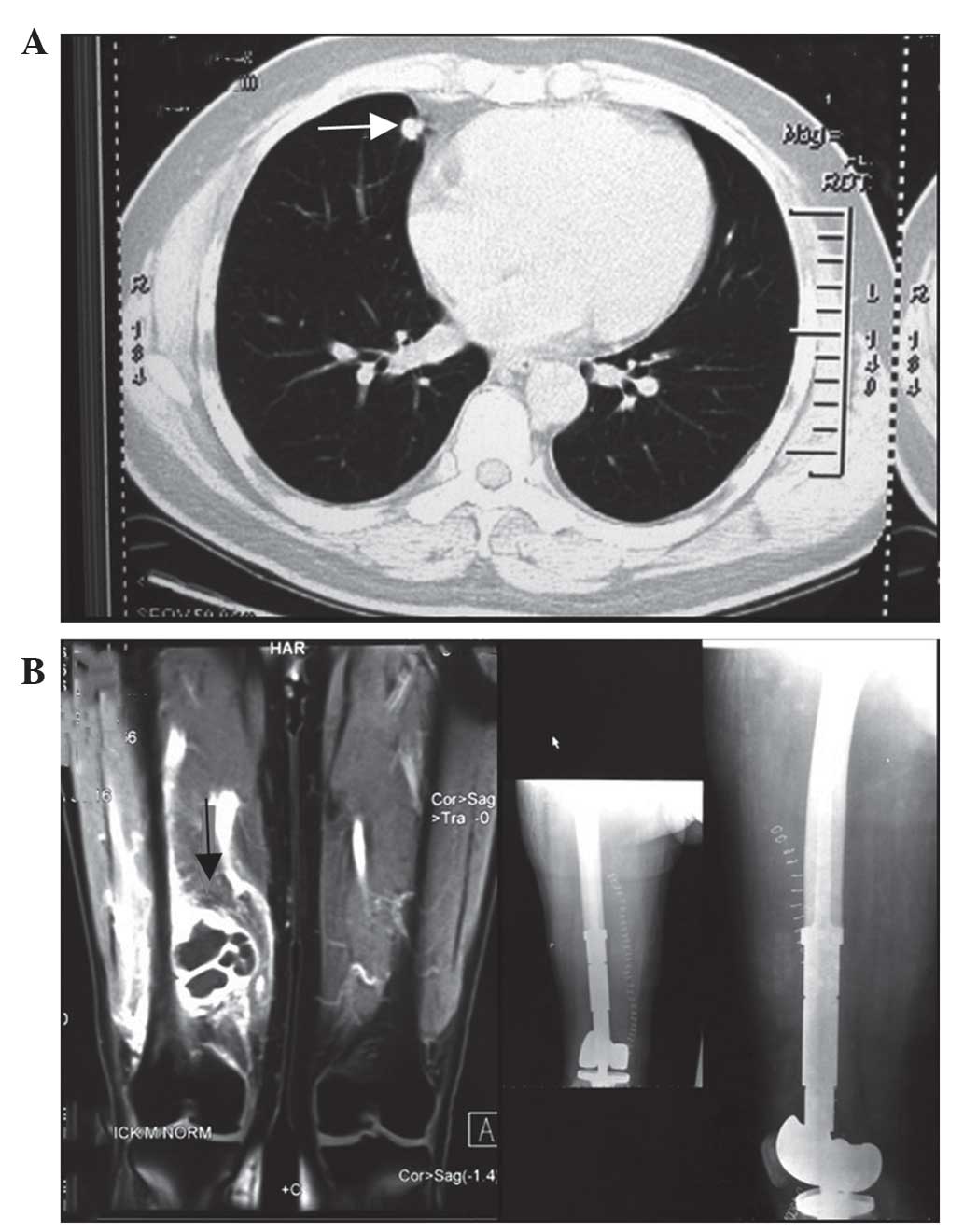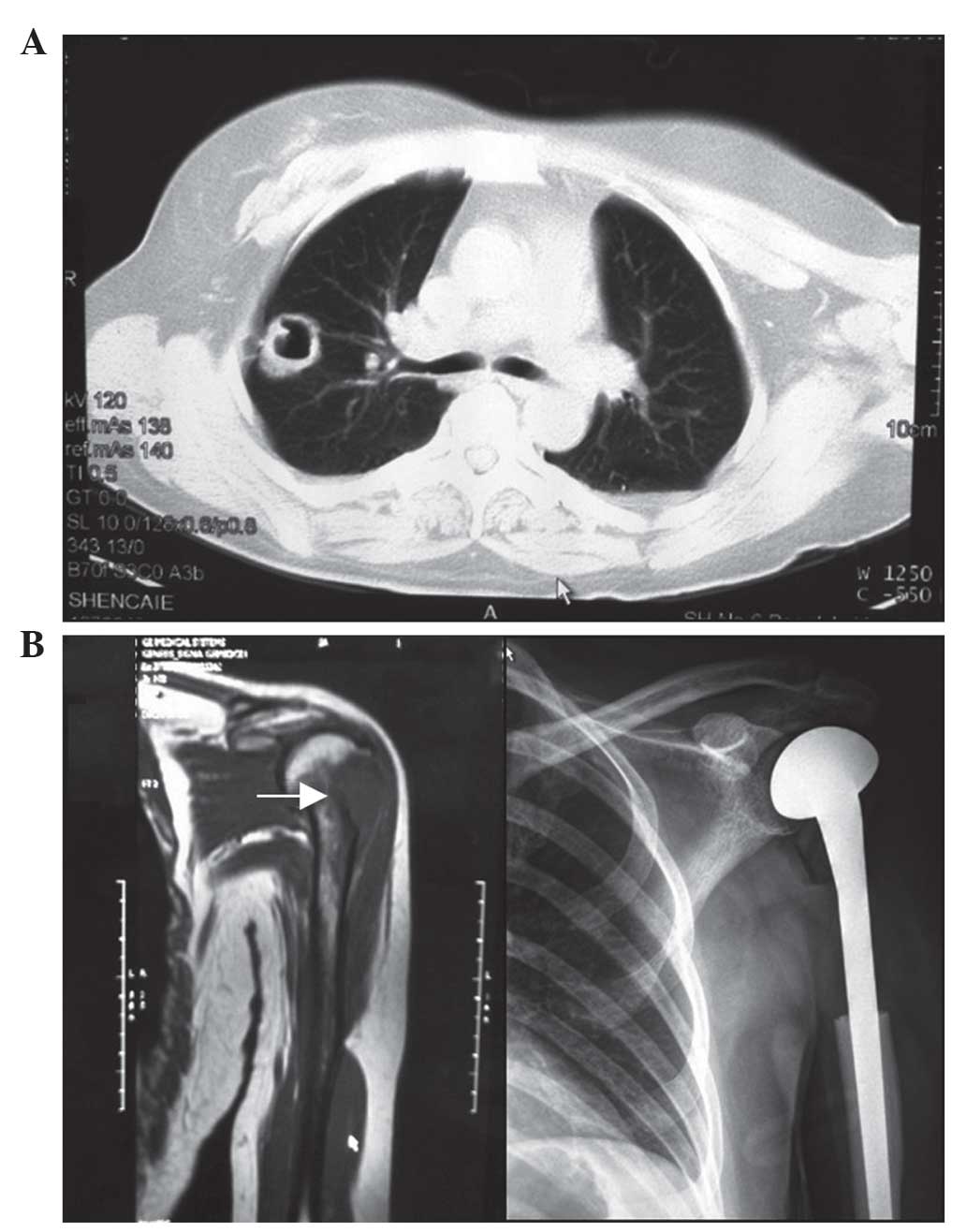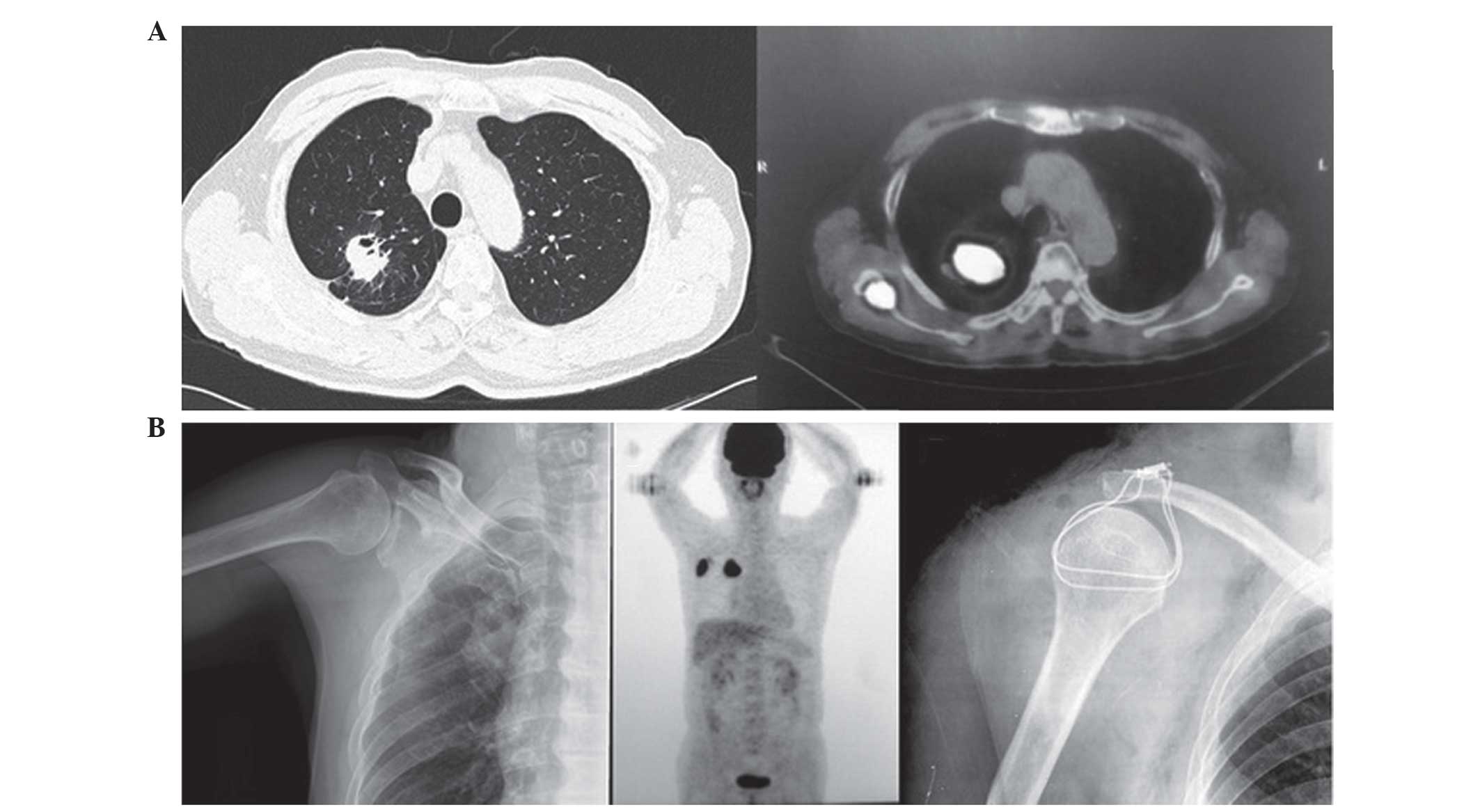|
1
|
Jemal A, Bray F, Center MM, Ferlay J, Ward
E and Forman D: Global cancer statistics. CA Cancer J Clin.
61:69–90. 2011. View Article : Google Scholar : PubMed/NCBI
|
|
2
|
Rosen LS, Gordon D, Tchekmedyian NS,
Yanagihara R, Hirsh V, Krzakowski M, Pawlicki M, De Souza P, Zheng
M, Urbanowitz G, et al: Long-term efficacy and safety of zoledronic
acid in the treatment of skeletal metastases in patients with
nonsmall cell lung carcinoma and other solid tumors: A randomized,
Phase III, double-blind, placebo-controlled trial. Cancer.
100:2613–2621. 2004. View Article : Google Scholar : PubMed/NCBI
|
|
3
|
Price N: Bisphosphonates to prevent
skeletal morbidity in patients with lung cancer with bone
metastases. Clin Lung Cancer. 5:267–269. 2004. View Article : Google Scholar : PubMed/NCBI
|
|
4
|
Groome PA, Bolejack V, Crowley JJ, Kennedy
C, Krasnik M, Sobin LH and Goldstraw P: IASLC International Staging
Committee; Cancer Research and Biostatistics; Observers to the
Committee; Participating Institutions: The IASLC Lung Cancer
Staging Project: Validation of the proposals for revision of the T,
N, and M descriptors and consequent stage groupings in the
forthcoming (seventh) edition of the TNM classification of
malignant tumours. J Thorac Oncol. 2:694–705. 2007. View Article : Google Scholar : PubMed/NCBI
|
|
5
|
Pfannschmidt J and Dienemann H: Surgical
treatment of oligometastatic non-small cell lung cancer. Lung
Cancer. 69:251–258. 2010. View Article : Google Scholar : PubMed/NCBI
|
|
6
|
Ettinger DS, Wood DE, Akerley W, Bazhenova
LA, Borghaei H, Camidge DR, Cheney RT, Chirieac LR, D'Amico TA,
Demmy TL, et al: Non-small cell lung cancer, version 6.2015. J Natl
Compr Canc Netw. 13:515–524. 2015.PubMed/NCBI
|
|
7
|
Hu C, Chang EL, Hassenbusch SJ III, Allen
PK, Woo SY, Mahajan A, Komaki R and Liao Z: Nonsmall cell lung
cancer presenting with synchronous solitary brain metastasis.
Cancer. 106:1998–2004. 2006. View Article : Google Scholar : PubMed/NCBI
|
|
8
|
Raviv G, Klein E, Yellin A, Schneebaum S
and Ben-Ari G: Surgical treatment of solitary adrenal metastases
from lung carcinoma. J Surg Oncol. 43:123–124. 1990. View Article : Google Scholar : PubMed/NCBI
|
|
9
|
Reyes L, Parvez Z, Nemoto T, Regal AM and
Takita H: Adrenalectomy for adrenal metastasis from lung carcinoma.
J Surg Oncol. 44:32–34. 1990. View Article : Google Scholar : PubMed/NCBI
|
|
10
|
Agarwala AK and Hanna NH: Long-term
survival in a patient with stage IV non-small-cell lung carcinoma
after bone metastasectomy. Clin Lung Cancer. 6:367–368. 2005.
View Article : Google Scholar : PubMed/NCBI
|
|
11
|
Hirano Y, Oda M, Tsunezuka Y, Ishikawa N
and Watanabe G: Long-term survival cases of lung cancer presented
as solitary bone metastasis. Ann Thorac Cardiovasc Surg.
11:401–404. 2005.PubMed/NCBI
|
|
12
|
Ono K, Nagashima A, Yokoyama E, Nose N and
Yasumoto K: Long-term survival after surgical resection of bone
metastasis from lung cancer. Kyobu Geka. 63:216–219. 2010.(In
Japanese). PubMed/NCBI
|
|
13
|
Bae HM, Lee SH, Kim TM, Kim DW, Yang SC,
Wu HG, Kim YW and Heo DS: Prognostic factors for non-small cell
lung cancer with bone metastasis at the time of diagnosis. Lung
Cancer. 77:572–577. 2012. View Article : Google Scholar : PubMed/NCBI
|
|
14
|
Qu X, Huang X, Yan W, Wu L and Dai K: A
meta-analysis of 18FDG-PET-CT, 18FDG-PET, MRI
and bone scintigraphy for diagnosis of bone metastases in patients
with lung cancer. Eur J Radiol. 81:1007–1015. 2012. View Article : Google Scholar : PubMed/NCBI
|
|
15
|
Lopes G, Piedade A, Goes L, Alves M and
Balu S: Diagnoses and treatment patterns for Non-small cell lung
cancer (Nsclc) within the private health system in Brazil. Value
Health. 18:A8252015. View Article : Google Scholar : PubMed/NCBI
|
|
16
|
Decroisette C, Monnet I, Berard H, Quere
G, Le Caer H, Bota S, Audigier-Valette C, Geriniere L, Vernejoux JM
and Chouaid C: Groupe Français de Pneumo-Cancérologie 0601 Team.
Epidemiology and treatment costs of bone metastases from lung
cancer: A French prospective, observational, multicenter study
(GFPC 0601). J Thorac Oncol. 6:576–582. 2011. View Article : Google Scholar : PubMed/NCBI
|
|
17
|
Sugiura H, Yamada K, Sugiura T, Hida T and
Mitsudomi T: Predictors of survival in patients with bone
metastasis of lung cancer. Clin Orthop Relat Res. 466:729–736.
2008. View Article : Google Scholar : PubMed/NCBI
|
|
18
|
Weiss RJ and Wedin R: Surgery for skeletal
metastases in lung cancer. Acta Orthop. 82:96–101. 2011. View Article : Google Scholar : PubMed/NCBI
|
|
19
|
Bao DM, Li N and Xia L: Risk assessment
and decision-making for patients undergoing orthopedic surgery. J
Orthop Surg Res. 10:1692015. View Article : Google Scholar : PubMed/NCBI
|

















